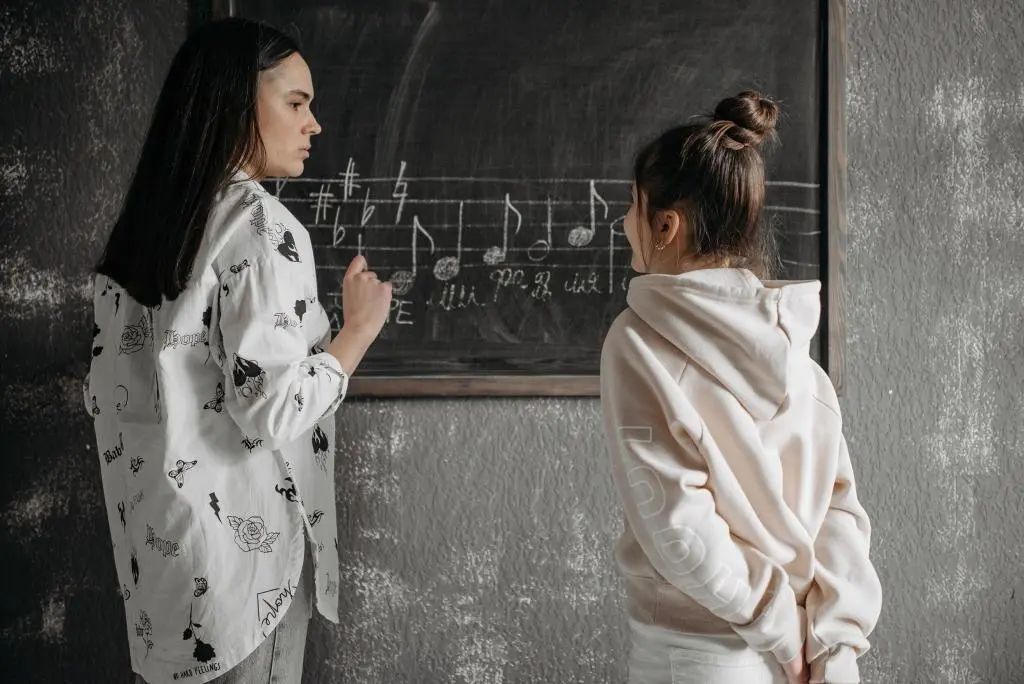Music is the art of arranging sounds in time to produce a composition with melody, harmony, rhythm, and expressive content.
This simple definition, however, does not encompass the incredibly diverse ways in which music manifests across human cultures. Music is a universal artform found in every society around the world throughout history. It is woven into the fabric of human life, serving social, emotional, ceremonial, and creative purposes since prehistoric times.

What is Music: Table of Contents
Across cultures and eras, music allows people to communicate emotions, ideas, stories, and community values. The oldest surviving written song dates back 4,000 years, showing just how fundamentally human the drive to create music is. The innate human appreciation for rhythm, melody, and structured sound has given rise to countless musical genres, traditions, and innovations over millennia. From the meditative ragas of classical Indian music to the party anthems of Western pop, the impulse to make music remains universal.
At both the societal and individual level, music plays a profound role in the human experience. It brings people together in ceremony and ritual, transmits cultural knowledge and history, facilitates emotional expression, and coordinates physical activities like marching or dancing. For individuals, engaging with music—whether listening, singing, or playing—provides enjoyment, self-actualization, and therapeutic benefits. The psychological attachment many feel to certain songs or musical eras illustrates music’s power.
Music is woven into the essential fabric of being human. While its surface manifestations vary immensely with time, technology, and location, at its core music arises from our shared capacity to experience wonder, emotion, and meaning through creatively organized sound. As long as humans gather and communicate, music will continue serving its timeless roles of bonding, inspiring, documenting, and delighting. This introduction provides merely a brief prelude to the rich symphony of musical experience awaiting any eager listener across the globe.

Defining Music
While most people have an intuitive sense of what music is, arriving at a precise definition is challenging. Music has both objective and subjective qualities, and perspectives on what constitutes music vary across cultures.
However, there are certain core elements that comprise most definitions of music:
- Organized sound: Music involves intentionally arranged sounds, as opposed to random noise. The organization occurs via elements like melody, rhythm, harmony, timbre, and form.
- Structural patterns: Notes and rhythms in music usually follow recognizable patterns and repetition, rather than being completely unpredictable.
- Expressive content: Music communicates emotion, ideas, or cultural meaning beyond just structured sound. Lyrics often convey explicit meaning.
- Aesthetic qualities: Music appreciation involves subjective, emotional responses. Listeners find certain compositions beautiful, enjoyable, inspiring, or meaningful.
- Cultural context: Musical meanings, forms, instruments, and styles are culturally situated. The definition of “music” in one culture may not encompass another’s traditional music.
In Western contexts, music is often contrasted with noise. However, in broader global contexts, definitions of music are more flexible and inclusive. The anthropological perspective recognizes that any sound intentionally organized to be meaningful within a culture can be considered music.
While definitions vary, music’s presence across human societies points to some universal neurological and cognitive foundations. Humans share innate capacities to discern pitch, rhythm, and structure in sound. Music creatively activates these capacities for expression, social cohesion, and more. No perfect definition can encompass all musical diversity, but its cultural universality signifies deep human connections to organized sound.
A Brief History of Music
The origins of music are shrouded in mystery, but theories abound. Some scholars speculate music initially helped humans learn language through mimicry of rhythmic vocalizations. Others propose music was key to community bonding, coordination of labor, or spiritual rituals. The oldest bone and ivory flutes from around 40,000 BC found in caves in Germany and France indicate early modern humans deliberately made sounds with intention and care.
In antiquity between 3000 BCE and 500 CE, music played central cultural roles in societies across the ancient world like Egypt, Greece, China, and India. Music was integral to religious rituals, storytelling, theater, and cultural identity. For example, ancient Greeks believed music could profoundly impact emotional states and ethics based on the musical mode. They also pioneered a notation system to write down melodies and scales. Complex musical instruments like harps, lyres, drums, and flutes have been unearthed from thousands of years ago across ancient sites in Asia, Africa, and Europe.
In India, core instruments like the sitar and tabla emerged between the 13th and 14th centuries CE. Indian classical music is grounded in the improvised raga tradition, which creates elaborate melodies by combining scale modes and characteristic motifs. China also boasts ancient musical traditions featuring instruments like the guqin zither, pipa lute, and dizi flute, used in court music and folk genres. Gamelan ensembles with gongs, metallophones, xylophones, and bamboo flutes remain integral to Indonesian and Javanese music since at least the 12th century, with some bronze gamelan artifacts dating even earlier.
In medieval Europe between 500 CE and 1400 CE, music was heavily dominated by the Catholic Church. Plainchant, also known as Gregorian chant, provided the foundation for early Christian liturgical music and medieval written music. During the Renaissance between 1400-1600 CE, more secular vocal and instrumental music flourished, particularly polyphonic masses. Instruments like the lute, violin, harp, and recorder gained increasing prominence. The Baroque period between 1600-1750 saw the beginnings of harmony and polyphony resembling modern Western music, especially in the works of influential composers like Bach, Vivaldi, Handel, and Scarlatti.
In the Classical period from 1750-1820, composers like Haydn, Mozart, and Beethoven expanded musical forms and complexity, especially in orchestral and chamber music genres. The Romantic era between 1820-1900 reacted against Classical strictures, with music becoming more emotionally expressive, colorful, and flexible in form. Composers like Berlioz, Chopin, Liszt, Wagner, and Mahler were influential. The 20th century saw massive diversification and innovation in Western music, including modernism, the expanded use of folk music, jazz, blues, rock, metal, electronic music, film scores, and avant-garde experimentation.
Recent technological advances starting in the late 19th century have radically democratized music production and consumption. From Edison’s invention of the phonograph using wax cylinders in 1877, to the introduction of the radio, the vinyl LP record, the cassette tape, the compact disc, and digital MP3 audio encoding, accessibility to recorded music has exponentially increased alongside quality. The Internet age has facilitated not just music listening, but sharing and creating music globally. Music genres now fuse and evolve as cultures and technologies collide in new ways, but music remains a universal human endeavor as old as humankind itself. The history of music mirrors the quest to channel sound into meaningful and aesthetic expressions of beauty, emotion, identity, and community.

The Creation of Music
There are three fundamental pathways for bringing music into existence: composition, performance, and improvisation. Each requires creativity, skill, and understanding of musical elements.
Musical composition is the process of intentionally organizing sound into a coherent structure. Composers make choices about melody, harmony, rhythm, form, instrumentation, and other qualities to create an expressive musical work. Notation and score writing allow composers to specify pitches, rhythms, dynamics, and form so others can perform the work. Western classical music relies heavily on written scores, but much folk, popular, and traditional music is transmitted orally/aurally.
In musical performance, musicians use voices or instruments to interpret, replicate, or build upon composed music. Performances range from rehearsed renditions of classical repertoire to live impromptu jam sessions. Solo musicians present self-contained performances while displaying virtuosic skill. Ensembles blend multiple musicians’ sounds and interactions, from jazz combos to symphony orchestras.
The connection between performers and audience is integral to the impact of live music. Audiences provide feedback through applause, cheering, dancing, or somber silence, fueling a loop of creative energy. Studio recordings lose this live reciprocity.
Musical improvisation involves spontaneously creating melodic, harmonic, and rhythmic ideas without prior planning. Practitioners develop improvisatory skill through years of practice. Jazz and blues heavily utilize improv, spinning endless variations on musical themes and responding inventively in the moment. Improvisation intertwines composition and performance, distilling music-making down to its real-time essence.
These three creative facets of music-making overlap and interrelate, but all require deep musical understanding. Whether meticulously composed, faithfully performed, or improvised on the fly, music comes to life through human creativity and shared understanding of musical elements.

Fundamentals of Music
While music manifests in countless genres and styles, certain core elements comprise the fundamentals of musical structure and meaning. These elements work together to create the sonic impact, aesthetic appeal, and expressivity of music.
- Pitch: The perceived highness or lowness of a musical sound governed by frequency. Pitches have specific names (e.g. A, G#, C5). Melodies employ pitch sequences.
- Melody: A succession of musical pitches that together form an expressive phrase or motif. A melody generally has an identifiable shape and cadence.
- Harmony: The simultaneous sounding of multiple pitches to produce chords and vertical sonorities. Major vs. minor chords elicit different moods in Western music.
- Rhythm: The patterns of long and short, stressed and unstressed sounds in music. Meter and tempo organize rhythm. Syncopation deliberately disrupts rhythm.
- Texture: How musical lines or parts interweave. Monophonic, homophonic, and polyphonic textures have varying densities and complexity.
- Timbre: The distinct quality or color of a sound. Instrumentation heavily affects timbre, as do playing techniques.
- Expression: The articulation, phrasing, and dynamics used to add emotion and meaning. Legato, staccato, vibrato, accents, etc.
- Form: The structural organization of music. Forms include binary, ternary, strophic, rondo, and theme/variations.
These elements intersect to generate music’s physical impact, aesthetic richness, and emotional resonance. Shifting any element subtly or dramatically alters the listening experience and meaning. Musicians manipulate these core ingredients intuitively and intentionally to craft desired effects.
The Experience of Music
Beyond its artistic and aesthetic merits, music profoundly shapes human thoughts, feelings, and behaviors. Understanding music requires examining its cognitive, emotional, and social impact.
Neuroscience reveals how our brains process musical information. Multiple brain regions cooperate to make sense of pitch, rhythm, timbre, melody, etc. and produce appropriate responses. fMRI scans show music activates areas involved in emotion and reward, explaining its pleasurable and mood-altering effects. Music triggers both involuntary reactions and conscious processing.
On a psychological level, music influences emotion, memory, and learning. Research shows particular melodic contours and musical modes consistently elicit certain moods like sadness or joy in listeners. Music enhances memory for associated information—the so-called “songs as mnemonics” effect. Music training develops auditory skills transferable to language learning.
Philosophers have proposed theories on the meaning, purpose, and metaphysics of music. Some contend music expresses primal human passions. Others see cosmic order and rationality encoded in music. Ongoing philosophical debates consider how music relates to beauty, truth, and the human experience.
Sociologically and culturally, music influences human behavior and social structure. It facilitates ceremony, rituals, dance, cultural transmission, and social cohesion. But debates continue over its morality and impacts on society. Clearly, music holds significant power over individual and collective human life.
Interdisciplinary perspectives on musical experience reveal its multilayered ability to shape our minds, emotions, and social relations. Music rewards scientific and philosophical inquiry precisely because it exemplifies the complexities of being human.

Music Education
Many paths exist for learning about music, both informally and through institutional education. These approaches equip aspiring musicians with knowledge and skills for diverse careers.
Informal music education includes self-teaching and apprenticeship. Many musicians learn independently by ear, mimicking recordings, analyzing scores, and experimenting. Self-teaching takes discipline but allows creative freedom. Alternatively, apprenticeship provides hands-on guidance from an expert musician. Apprentices directly absorb their mentor’s musical craft.
Formal education institutions like colleges provide rigorous music training. Typical undergraduate music programs include:
- Music theory: The linguistic analysis of melody, harmony, rhythm, form, and composition. Essential for advanced musicianship.
- Musicology: The academic study of music history, styles, composers, and cultural context.
- Ethnomusicology: Examines music within cultural and social contexts, especially non-Western and folk traditions.
- Music education: Training to become a certified music teacher in K-12 schools. Teaches pedagogy, curriculum design, child development, etc.
- Music business: Explores the commerce, marketing, technology, and laws of the music industry.
Conservatories focus intensively on performance and theory training. All programs build musical competency and deep listening skills.
This education feeds into diverse music careers: performers, composers, producers, researchers, teachers, sound engineers, journalists, and more. Passionate musicians can make an impact through many professional pathways.
Academic Study of Music
Beyond creating and enjoying music, humans study music itself through diverse academic lenses. Rigorous scholarship expands our understanding of music’s meanings, origins, and role in society.
- Musicology involves comprehensive, research-based study of music. It combines historical musicology, ethnomusicology, and musical analysis. Musicologists elucidate how music relates to culture, psychology, politics, and more.
- Music theory analyzes the language, structures, notation, and compositional techniques of music. It studies the elemental components of music like melody, harmony, rhythm, and form. Understanding musical syntax and vocabulary is essential for advanced composition, performance, and scholarship.
- Zoomusicology explores the music of non-human animals. It examines topics like the origins of music in animal song, music’s biological foundations, and meanings we project onto animal sounds. This field provides insight on music’s evolutionary origins.
- Ethnomusicology examines music in its cultural context. Researchers study musical artifacts, practices, and meanings in societies worldwide. It combines musicology, anthropology, folklore studies, psychology, and cultural studies.
These fields prove music rewards rigorous academic inquiry. Applying philosophy, history, theory, and interdisciplinary lenses enriches the discourse around music’s role in human life. Music scholarship will continue illuminating the endless depths of musical expression.
Music in Media and Culture
Music holds an integral role in human cultures that goes beyond art and entertainment. It is woven into the fabric of religious, social, and economic life.
Music enhances ritual practices across faiths and cultures. Chants, hymns, drums, and other instruments have long supported religious rites, from Sufi ceremonies to Christian masses. Sacred music connects worshipers more deeply to spiritual experience and tradition.
Vital community and cultural events rely on music. Weddings, funerals, graduations, and civic celebrations incorporate meaningful songs and performances. Music shapes collective memory and identity.
As entertainment, music is both artistry and commercial industry. Concerts, albums, streaming platforms, and public performances generate billions in revenue. Savvy marketing and distribution strategies are required for success.
Sociologists examine music’s role in society and culture. Music can enforce social norms or subvert hierarchies. Musical preferences and practices map onto demographic factors like age, race, class, and geography.
Music journalists provide commentary and critique on new releases, trends, and artists. Quality writing meaningfully contextualizes albums and tracks for audiences. Social media allows more diverse voices to be heard.
Academic music criticism analyzes works in scholarly depth, elucidating technical features and cultural context. Rigorous critique expands musical understanding.
In media, culture, and society, music carries weighty significance, well beyond its sonic properties. Musicologists, journalists, and fans explore this rich extra-musical domain.
Final Thoughts about What is Music
Music is a universal language that resonates deeply across human cultures. Its omnipresence through space and time testifies to music’s profound role in the human experience.
Despite surface differences, common threads connect musical traditions worldwide. All cultures organize sound into meaningful aesthetic forms that express identity, values, emotion, and community. The urge to make music seems ingrained in humankind.
Yet music always overflows attempts to completely explain it. Defining music rationally neglects its visceral, emotional power. Classifying musical genres cannot capture innovation and fusion. Neuroscience clarifies music’s cognitive processing but not its ineffable magic.
Reducing music to any one function also fails to encapsulate its multifaceted significance. It is art, entertainment, cultural heritage, ritual, social glue, communication, identity, political expression, sacred invocation, and more. Music escapes tidy categorization.
At its core, music is a profound manifestation of the human condition. It reveals our sensuality, spirituality, intellect, and sociality. Music provides a doorway to understand the beauty, contradictions, and mysteries of being human. No matter how it evolves in form, music remains universally beloved.
The depths of music cannot be wholly mapped, but its endless exploration profoundly rewards. Engaging with music – as composer, performer, scholar, or listener – allows us to hear our story as a species. Music forever invites us to reflect, feel, dream, connect, and be inspired.

